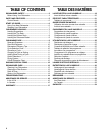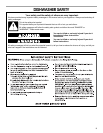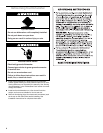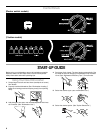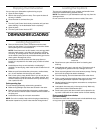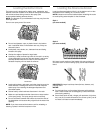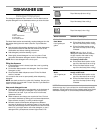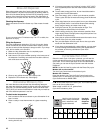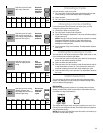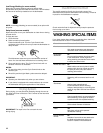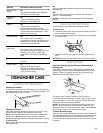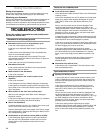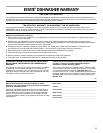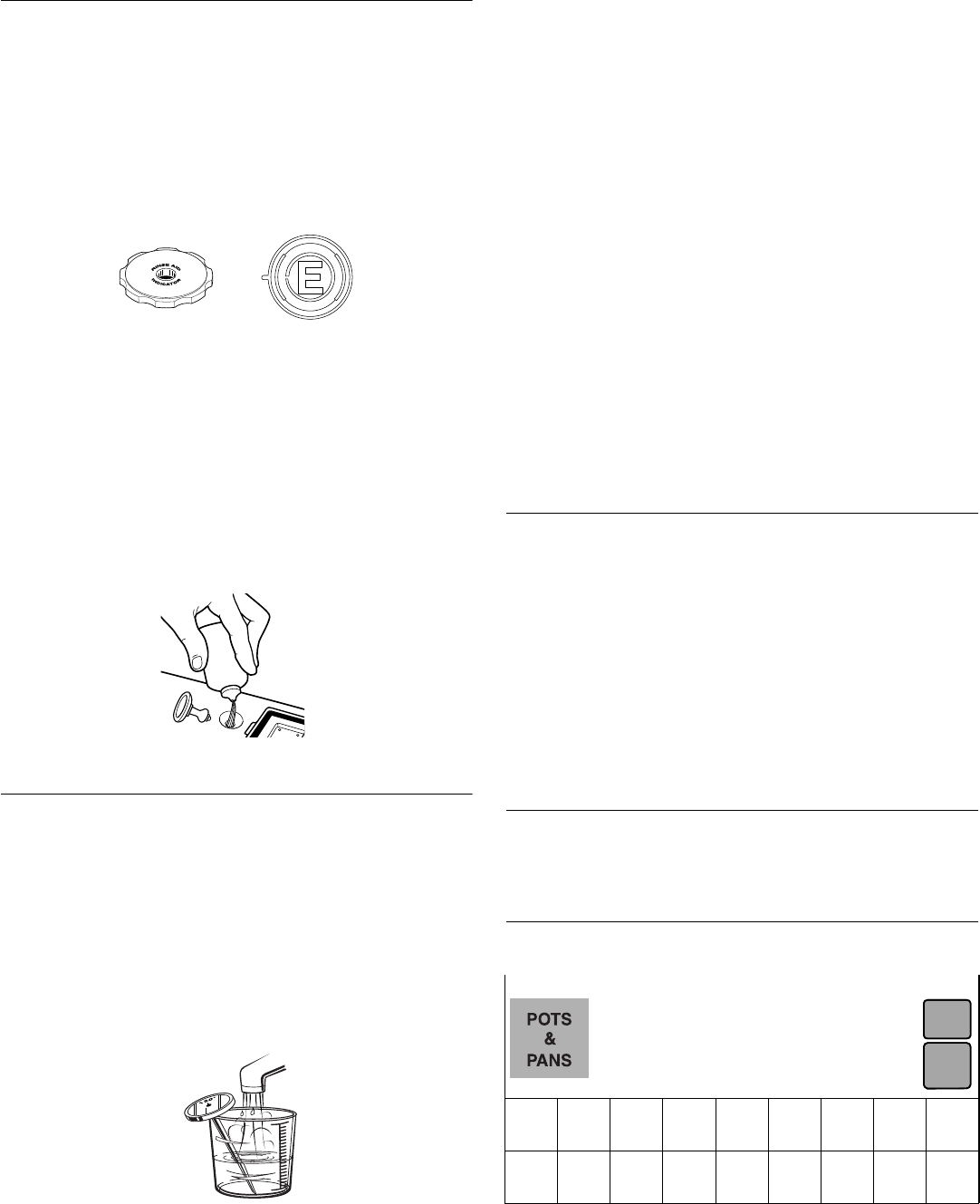
10
Rinse Aid Dispenser
Rinse aids prevent water from forming droplets that can dry as
spots or streaks. They also improve drying by allowing water to
drain off of the dishes during the final rinse by releasing a small
amount of the rinse aid into the rinse water. Your dishwasher is
designed to use a liquid rinse aid. Do not use a solid or bar-type.
Checking the dispenser
Check the center of the Fill Indicator cap. Clear means it needs
filling.
Or you can remove the Fill Indicator cap. If an “E” is visible, the
dispenser is empty.
Filling the dispenser
The rinse aid dispenser holds 6 oz (175 mL) of rinse aid. Under
normal conditions, this will last for about three months. You do
not have to wait until the dispenser is empty to refill it. Try to keep
it full, but be careful not to overfill it.
1.
Make sure the dishwasher door is completely open.
2.
Remove the Fill Indicator cap.
3.
Add rinse aid. Fill to the smallest opening in the lower part of
the dispenser. Overfilling can cause the rinse aid to leak out,
and could cause oversudsing.
4.
Clean up any spilled rinse aid with a damp cloth.
5.
Replace the Fill Indicator cap. Close tightly.
Dishwasher Efficiency Tips
Hot water dissolves and activates the dishwashing detergent.
Hot water also dissolves grease on dishes and helps glasses dry
spot-free. For best dishwashing results, water must be at least
120°F (49°C) as it enters the dishwasher. Loads may not wash as
well if the water temperature is too low.
To check water temperature
1.
Run hot water at the faucet closest to your dishwasher for at
least 1 minute.
2.
Place a candy or meat thermometer in a glass measuring
cup.
3.
Check the temperature on the thermometer as the water is
running into the cup.
4.
If the water temperature at the faucet is below 120°F (49°C),
have a qualified person raise the water heater’s thermostat
setting.
■ To save water, energy and time, do not rinse dishes before
putting them into the dishwasher.
■
Use a low energy, quick, or short cycle whenever possible.
These cycles use less hot water and energy than the Normal
cycle.
■ Use a delay feature (on some models) to run your dishwasher
during off-peak hours. Local utilities recommend avoiding
heavy usage of energy at certain times of day.
■
During the summer, run your dishwasher at night. This
reduces daytime heat buildup in the kitchen.
■ Use the energy-saving dry option whenever possible. Allow
longer drying times (overnight) when using these options. Use
a rinse aid to improve drying.
■
Use cycles or options that add extra heat to the wash or rinse
portion of the cycle only when needed.
■
Run your dishwasher with full loads. Run a rinse cycle after
meals until the dishwasher is full.
■ If your home is equipped with a water softener, you may want
to avoid starting the dishwasher during the regeneration of
the softener, as this may contribute to poor wash
performance.
Cycle Selection Chart
Select the wash cycle. If the door is latched, you will hear the
cycles start and stop as the Cycle Control knob passes each
cycle mark. This is normal and does not hurt the dishwasher. If
you prefer, you can set the Cycle Control knob with the door
unlatched.
NOTE:
Use the No Heat Dry option with the Rinse Only cycle.
Models with a rocker switch:
Turn the Cycle Control knob to the desired cycle.
Models with 7 buttons:
Press the desired cycle. Turn the Cycle Control knob to the
desired cycle.
To use Rinse Only, press any cycle and turn the
Cycle Control knob to RINSE ONLY.
A “
●
” shows what steps are in each cycle. Your model may have
some or all of the cycles shown.
Water usage is shown in U.S. gallons/liters.
Cycle time includes dry time.
OR
Pre-
Wash
Rinse Rinse Main
Wash
Rinse Final
Rinse
Dry Time
(min)
Water
Usage
(gal/L)
●
●●
●●
●●
●●
●●
●●
●●
●●
●●
●●
●●
●●
●●
●
98 8.6/32.7
Use this cycle for hard-to-
clean, heavily-soiled pots,
pans, casseroles, and
regular tableware.
Use both
detergent
dispenser
sections.



